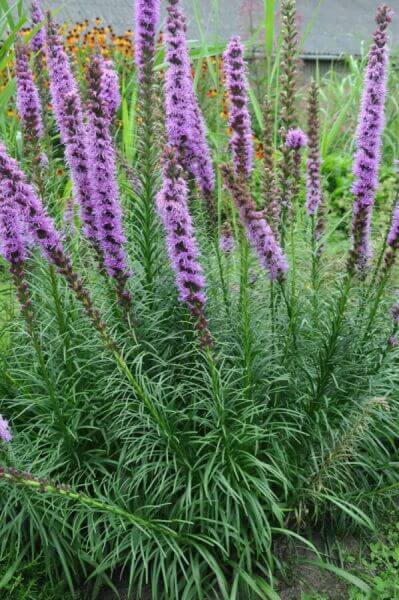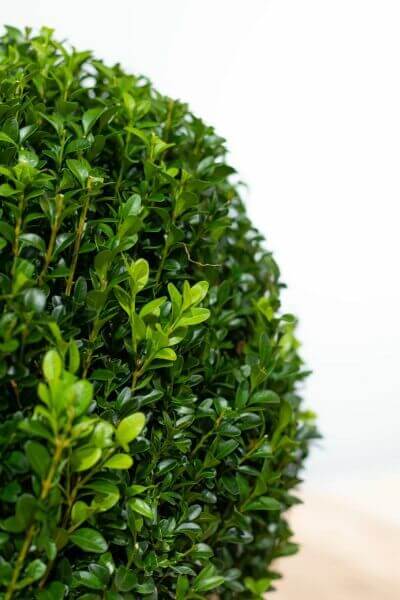Hedging Plants For Attracting Birds
Hedging Plants For Attracting Birds
Blog Article
Hedge Plants For Walkway Borders
Enhance your garden's appeal with lush hedge varieties such as Yew (Taxus), Thuja, Laurel, Photinia, and Bamboo, commemorated for their structural integrity and ecological benefits.
Yew and Thuja provide evergreen protection and winter resilience, while Laurel provides quick growth and broad, aromatic leaves.
Photinia includes seasonal charm with its lively red foliage, and Bamboo lends a low-maintenance, serene ambiance.
These hedges enhance air quality, decrease sound, and create tranquil, private areas.
Appropriate planting, spacing, and maintenance ensure energetic growth and environmental harmony.
Check out how these lush varieties can raise your garden's appeal and well-being.
Key Takeaways
Transform Your Garden With Lush Hedge Ranges
- Select Yew for its thick, evergreen growth and unequaled longevity.
- Choose Laurel for its quick development and broad leaves, making sure fast privacy.
- Choose Photinia for its dynamic seasonal foliage, which turns a striking dark red.
- Make use of Bamboo for a low-maintenance, winter-hardy hedge with visual appeal.
- Area plants 2-3 per meter and prune regularly for optimal growth and health.
Popular Hedge Plants
When transforming a garden with rich hedge varieties, it's important to think about popular hedge plants such as Yew, Thuja, Laurel, and Photinia due to their special characteristics and benefits.
Yew (Taxus) is highly esteemed for its longevity and dense, green development, making it a prime option for sustaining landscapes.
Thuja is kept in mind for its evergreen foliage and robust winter season strength.
Photinia adds seasonal vibrancy with red leaves that darken in time, producing dynamic visual appeal.
Laurel offers rapid development and aromatic, broad leaves, perfect for fast privacy.
Additionally, Bamboo is an outstanding option for atmosphere, providing a low-maintenance, winter-hardy choice that enhances the garden's visual with its classy, swaying walking sticks.
These selections cater to a range of horticultural needs and preferences.
Advantages of Garden Hedges
Garden hedges use a plethora of advantages, making them a valuable addition to any landscape. These natural barriers are cost-efficient to carry out and offer considerable wind protection, boosting air flow and contributing to sound decrease. The thick foliage of hedges like Thuja and Beech guarantees privacy by obstructing presence, producing a secluded and tranquil environment.
Hedges also play a crucial function in microclimate regulation, supplying a stable environment that fosters plant development and minimizes temperature level fluctuations. Their elaborate leaf structures filter pollutants, enhancing air quality and contributing to a healthier garden environment.
Additionally, hedges stand out in noise decrease, soaking up and deflecting sound waves to lower ambient noise levels. This double performance of offering both visual and acoustic privacy enhances the total tranquility and visual appeal of any garden.
Planting and Maintenance Tips
For a successful hedge, precise preparation of the planting area is essential. Make sure the soil has proper pH and drainage to support strong root advancement.
Space the plants properly for the chosen species. Water the hedge often throughout its preliminary growth phase, changing as required with seasonal modifications.
Execute a organized pest control and disease prevention method, utilizing chemical or natural treatments when necessary. Routinely inspect for aphids, termites, and fungal infections.
Apply mulch to keep moisture and suppress weeds. Seasonal pruning promotes thick development and air blood circulation, essential for plant health.
Following these guidelines will help you cultivate a dynamic, properly maintained hedge that boosts the beauty of your garden.
Spacing and Cutting Standards
Spacing and Cutting Standards
Correct spacing and cutting are essential for cultivating healthy, visually appealing hedges. Sufficient spacing guarantees each plant gets adequate nutrients, light, and air flow.
Follow these standards for ideal hedge maintenance:
- Spacing: Position hedge plants 2-3 plants per meter to encourage robust development.
- Pruning Strategies: Routine pruning is necessary for keeping wanted hedge height and shape. Cut brand-new growth in summertime and cut back older wood during winter season.
- Seasonal Care: Change cutting schedules and approaches according to seasonal requirements to guarantee plant health.
- Hedge Height: Regularly monitor and cut to keep the preferred hedge height and achieve uniform aesthetics.
Following these actions will ensure your hedge flourishes, improving both the appeal and functionality of your garden.
Choosing the Right Hedge
Selecting the Right Hedge
Choosing the appropriate hedge includes assessing elements such as mature height, foliage density, and ecological durability. Successful hedge plant choice requires comprehending each types' development qualities and site-specific flexibility.
For instance, Yew (Taxus) offers exceptional longevity and dense development, while Thuja is notable for its winter season durability. Furthermore, thinking about maintenance requirements is crucial; fast-growing types like Laurel or Privet demand routine cutting, whereas low-maintenance choices like Bamboo or Ivy may be more suitable for those seeking minimal maintenance.
Ecological factors such as soil type, light schedule, and moisture conditions need to likewise direct the choice process. This cautious technique ensures the selected hedges will prosper, supplying both practical and aesthetic benefits to the garden landscape.
Shipment and Planting Advice
To ensure your hedge plants grow, they should be delivered by specialized carriers and planted promptly upon arrival.
Follow these vital actions for successful planting:
- Soil Preparation: Enhance the soil with raw material to enhance drainage and nutrient content.
- Planting Depth: Produce a trench two times the width and equivalent to the depth of the root ball.
- Watering Techniques: Water completely after planting, keeping the soil regularly moist but not saturated.
- Mulching: Apply a layer of mulch to keep wetness and reduce weeds.
Client Assistance and Service
Offered the crucial role of prompt help in horticultural pursuits, our consumer assistance group is available six days a week through telephone, email, and social media to offer expert guidance and quickly attend to any issues. Their commitment to fast reaction times guarantees client fulfillment by fixing questions connected to plant health, ideal planting techniques, and maintenance schedules.

Action Time
This extensive assistance system, enhanced by an excellent 9.3/ 10 customer rating, highlights our commitment to improving the gardening experience for each customer.
Regularly Asked Concerns
The Length Of Time Does It Consider Hedge Plants to Develop?
Hedge plants usually need one to 3 years to end up being totally developed, with the precise duration varying by species and growing conditions.
Effective care during this critical period is essential for robust development. Constant watering, alert weed control, and suitable fertilizer application are critical in promoting strong root development.
For example, fast-growing types like Laurel might develop faster, while slower-growing varieties such as Yew might take longer. Diligent upkeep speeds up the establishment process, resulting in thick and healthy hedges.
What Are the Finest Hedge Plants for Privacy?
The question of the very best hedge plants for personal privacy involves evaluating evergreen and deciduous alternatives.
Evergreen hedges like Thuja, Laurel, and Cypress supply year-round coverage, ensuring constant personal privacy.
In contrast, deciduous hedges such as Beech offer seasonal personal privacy, shedding leaves in chillier months.
Key upkeep suggestions for privacy hedges consist of regular cutting, fertilizing in spring, and appropriate spacing-- generally 2 to 3 plants per meter.
In addition, constant watering and diligent weed elimination are important for promoting healthy, dense development.
Can Hedge Plants Draw In Wildlife to My Garden?
Yes, hedge plants can attract wildlife to your garden by supplying important advantages like shelter, food, and nesting sites, therefore improving regional biodiversity. For example, yew, holly, and laurel are excellent for drawing in birds, while ivy supports a variety of insects.
Nevertheless, it is very important to keep in mind that there are some drawbacks, such as increased maintenance to handle pests and routine maintenance. Carefully picking and maintaining hedge varieties can assist balance these benefits and downsides, eventually fostering a dynamic and sustainable environment in your garden.
Exist Any Flowering Hedge Plants Available?
Yes, there are flowering hedge plants readily available that can enhance the charm of your garden.
For instance, Elaeagnus, likewise called Olive Willow, produces aromatic white flowers in the fall, including a touch of elegance.
Photinia, another popular choice, showcases dynamic red leaves that grow into an abundant green, creating a dynamic visual impact throughout the seasons.
To guarantee these plants grow, it's vital to practice appropriate pruning methods and seasonal upkeep, such as cutting brand-new development in the summer and cutting back in the winter.
These steps will help preserve the health and visual appeal of your blooming hedges.
How Do I Avoid Pests in My Hedge Plants?
To prevent pests in hedge plants, employ natural insect control techniques and preserve website appropriate hedge care. Present helpful pests like ladybugs, which victimize damaging bugs, to develop a well balanced community.
Routinely examine your hedges for signs of invasion and immediately get rid of any afflicted parts to avoid the spread. Make sure the health of your hedges by using well balanced fertilizers and offering sufficient water.
Use mulching to keep soil moisture and correct spacing to lower plant tension and promote robust growth. These practices collectively help in minimizing bug problems and preserving a healthy hedge.
Conclusion
In essence, choosing the ideal hedge ranges such as Yew, Thuja, and Laurel can transform any garden into a tranquil sanctuary. These plants offer year-round greenery, enhance visual appeal, and deal practical benefits like sound decrease and wind security.
Proper planting strategies, accurate spacing, consistent watering, and seasonal cutting are essential for ideal growth.
Reliable shipment services and professional customer assistance guarantee a seamless experience from purchase to planting, making it easier than ever to elevate your outdoor area.
Garden hedges offer a plethora of benefits, making them an important addition to any landscape. These natural barriers are economical to implement and supply significant wind defense, boosting air flow and contributing to sound reduction. The thick foliage of hedges like Thuja and Beech ensures personal privacy by blocking exposure, developing a secluded and peaceful environment.

Pruning Techniques: Routine pruning is necessary for preserving desired hedge height and shape. Cut new growth in summer season and cut back older wood during winter season.
Report this page